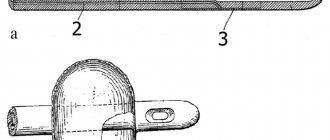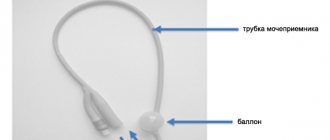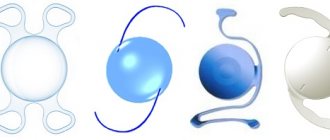Types of urological (urinary) catheters
A urinary catheter is a medical instrument designed to collect and remove urine from the body when the natural processes of urination are disrupted. Placement of a urinary catheter may be indicated in the case of diagnostics of the genitourinary system, postoperative rehabilitation and diseases when there are difficulties with the independent removal of urine from the body.
Urinary catheters come in several types and are designed for different durations of use. The catheter can be inserted into the urethra or into the renal pelvis, or used in the ureter or bladder. The choice of a certain type of catheter is made by the doctor based on the patient’s diagnosis, installation site and individual characteristics.
Catheters come in the following types:
- Nelaton. Designed for short-term installation in the bladder.
- Timann. Used in patients with urethral pathology.
- Pezzera. Used for long-term installation in the bladder.
- Foley. This type of catheter is used for placement of patients by Paramedic Help specialists. Read below in a separate chapter for the features and advantages of the Foley catheter.
In addition to the listed types, there are other catheter options that are used in more limited cases.
Urological catheter care:
Proper hygiene and care of the catheter prevents urinary tract infections.
It is necessary to wash the perineum with warm water 2 times a day (or more if necessary).
After each bowel movement, washing is necessary. Women carry out a washing movement from the pubis to the pelvis in one direction. Men thoroughly wash the skin folds and expose the foreskin. For washing, use warm water, if necessary, special detergents or neutral pH soap.
You can shower with the catheter, but it is important to protect the catheter from water getting into it.
You can use any method for this:
- Disconnect the catheter from the bag and clamp it with a special clip. Showered. After a shower, thoroughly dry the genitals and the outer part of the catheter with a towel. Then remove the clip and connect the catheter to the bag.
- Empty or replace the urine bag and secure it to your leg. After a shower, thoroughly dry the genitals, catheter, and urine bag with a towel (or change it).
It is forbidden:
When treating the outer part of the catheter and the skin around it, do not use cotton wool or cotton pads . They can leave behind fibers that cause inflammation.
It is forbidden to rinse the catheter with water or other means without medical supervision, as this may cause inflammation. Take a bath or steam in a sauna.
You can swim after your doctor gives you permission and takes precautions.
Drinking regime or how much can a person with a catheter drink?
Watch your drinking regime. Maintain the amount of fluid you drink as recommended by your doctor.
It is necessary to consume clean, plain water.
Not drinking enough water increases the risk of urinary tract infections and sediment in the urine.
Use clear urine bags to monitor the quantity and quality of your urine.
You can buy a urine bag and catheters, and get more detailed information on the website www.mystoma.ru
Share on social media networks
RќСЂР°РІРёС‚СЃСЏ
Share link:
- Click to share on Twitter (Opens in new window)
- Click here to share content on Facebook. (Opens in a new window)
Tags: hygiene during catheterization, douche and catheter, foley catheter, catheters, urinary catheter, urinary catheters, catheter use, catheter care
This entry was posted on Monday, August 19th, 2021 at 22:10 and is under filed Basic information about catheters, Rules of use, Problem solving. You can follow any responses to this entry through the RSS 2.0 feed. Both comments and pings are currently closed.
Foley catheter
This is the most common and popular type of urinary catheter. A Foley catheter is a soft latex, silicone, or silver-coated silicone tube that is inserted into a patient's bladder to drain urine. This catheter is characterized by the presence of an inflatable rubber balloon, which securely holds the device in the patient’s body.
The scope of application of Foley catheters is varied. Therefore, such catheters are presented in several types: two-way and three-way. Each of these catheters is used individually depending on the doctor's indications. For example, a 3-way catheter allows the administration of medications due to the presence of an additional channel.
A Foley catheter is used for inflammation, pathologies of the genitourinary system, as well as obstruction of the genitourinary tract. This catheter can be used to flush the bladder or remove blood clots. It is very effective to use a Foley catheter for urinary retention, since already during its installation the patient begins to outflow urine.
Depending on the gender and age of the patient, Foley catheters are classified according to the length, diameter and volume of the balloon. This is designed for comfortable insertion and use of the catheter by men, women or children. Paramedic Help doctors will be able to determine and select the required catheter size.
General information about catheters:
catheter is a special tube inserted through the urethra, urethra, and into the bladder. A person needs a catheter to remove urine if he cannot urinate himself.
There are permanent catheters that stay in the body from several days to months. And catheters for temporary catheterization - inserted for a few minutes to urinate.
Caring for a permanent catheter that remains in the urinary system for a long time requires attention and care.
Most often, Foley catheters are used for long-term catheterization; they can be attached to the bladder using a balloon through a separate passage. The balloon is inflated using a syringe, like a balloon. An inflated balloon holds the catheter inside the bladder. Urine flows through the catheter through special holes.
The catheter is attached to a urine bag that collects urine.
Installation and replacement of a urinary catheter
Carrying out the procedure for placing a urinary catheter requires certain knowledge and skills, which are possessed by the medical specialists of Paramedic Help. Do not insert a catheter yourself, so as not to damage the genitourinary organs and introduce an infection into the body.
Placement of the catheter begins with hygiene procedures. It is important to thoroughly clean and disinfect the patient’s external genitalia. The doctor or nurse himself also thoroughly washes and disinfects his hands, and uses sterile gloves. The patient is advised to relax and trust the specialist, then the process of installing a urinary catheter will be quick and painless.
How the catheter is placed:
- The patient lies on his back with his knees bent. The patient's position is slightly different depending on whether the catheter is being inserted into a man, a woman, or a child. Don’t worry, the doctor or nurse will tell you how to position your legs correctly to make the procedure as comfortable as possible.
- The specialist slowly inserts the catheter into the urethra until urine begins to flow into the device. This indicates that the catheter is installed correctly.
- Next, a urinal is installed, which is fixed on the patient’s thigh or bed.
Usually the catheter is used for no more than a week, after which it needs to be replaced. Silicone catheters can be used a little longer. Catheter replacement should be entrusted to specialists with medical education. It is not recommended to try to remove the urinary catheter yourself to avoid pain and unpleasant consequences. Contact Paramedic Help for catheter replacement services. Specialists will professionally carry out the necessary procedures with comfort for the patient.
Care of the urinal:
- The urinal (bag for collecting urine) is emptied every 3-4 hours (or as needed), as well as before water procedures.
Do not allow the urine bag to be more than half full.
- Change the urine bag every 1-3 days. It is better to use disposable urine bags; they are cheap but convenient.
- Before changing the urine bag, wash your hands thoroughly with soap or anoint them with antibacterial gel, and treat the area where the catheter and urine bag are connected with an antiseptic>>>.
- You can add a few drops of odor neutralizer to the bag.
- After replacing the bag, make sure urine is flowing into it.
- At night, use special night (bedside) models of urinals. They have a large bag volume and a long tube, and can be attached to a bed.
Attaching the urine bag to the leg:
- In order to actively move, use special straps to attach the urine bag to your leg (on the thigh or lower leg).
- It is recommended to choose wide clothing so that the bag on the leg does not squeeze.
- The bag is attached below the level of the bladder. Otherwise, urine will begin to flow through the catheter back into the bladder, which can lead to infection.
- When attaching the urine bag to the bed or leg, make sure that the tube does not bend.
Catheter Care
Following certain rules for caring for a urinary catheter will avoid possible complications and the risk of infection. After installing the catheter, your doctor will tell you how to properly care for it.
It is extremely important for a patient with a catheter to keep the external genitalia clean. The genitals should be carefully washed every day, and the outer part of the catheter should be wiped with a disinfectant solution or alcohol. Make sure that the urinal is located below the bladder, so urine will not flow back. The tube leading to the urinal should not get tangled or bent so that the outflow of fluid from the bladder occurs unhindered. Always wash and disinfect your hands thoroughly before emptying the urine bag of liquid.
Clean and rinse the urine bag only on the advice of a doctor. Do not try to remove and wash the catheter yourself; this is dangerous to your health. If a patient with a catheter experiences discomfort, pain, or difficulty draining fluid from the bladder, immediately call Paramedic Help medical specialists.
Certified Paramedic Help physicians professionally insert and replace catheters in accordance with medical protocols. Submit a request to install or replace a catheter, and our specialists will contact you as soon as possible.
What you need to care for your catheter
To care for the catheter and the patient’s perineal skin, you will need the following equipment:
- Sterile medical gloves.
- Clean towel or napkins.
- Oilcloth for placing under the patient’s buttocks to prevent the bed linen from getting wet
- Plastic bags for storing dirty linen and used dressings.
- Sterile dressing material – cotton balls or gauze, napkins, tampons.
For washing, use a basin or bedpan, as well as a water jug. The skin is treated with soap.
Common symptoms and manipulations in urology:
- Pain when urinating
- Discharge from the urethra
- Itching in the urethra
- Short frenulum of the foreskin
- Prostate massage
- Prevention of casual sex
- Frenum plastic surgery
- Circumcision
- Kidney pain
- Perineal pain
- Stones in the kidneys
- Pus in urine
- Catheter removal at home
- Bougienage of the urethra
- Urinary retention
- Urological examination
- Papillomas on the foreskin
- erectile disfunction
- Make an appointment with a urologist
Complications when installing a catheter at home
If the catheter is placed incorrectly, serious complications can occur. The patient should immediately invite a healthcare professional to provide the necessary assistance if the following complications are detected:
- Bleeding in or around the catheter;
- Do not leak urine from the catheter if you drink a large volume of liquid;
- The patient feels chills and has a fever;
- A large amount of urine forms around the catheter;
- The urine that comes out has an unpleasant odor and has a cloudy, thick structure;
- Swelling of the skin is observed in the area where the catheter is located.
A specialist from our clinic will arrive within half an hour. He will carefully examine the patient's condition. Find out the cause of the side effect. Select effective methods to eliminate pain symptoms.









